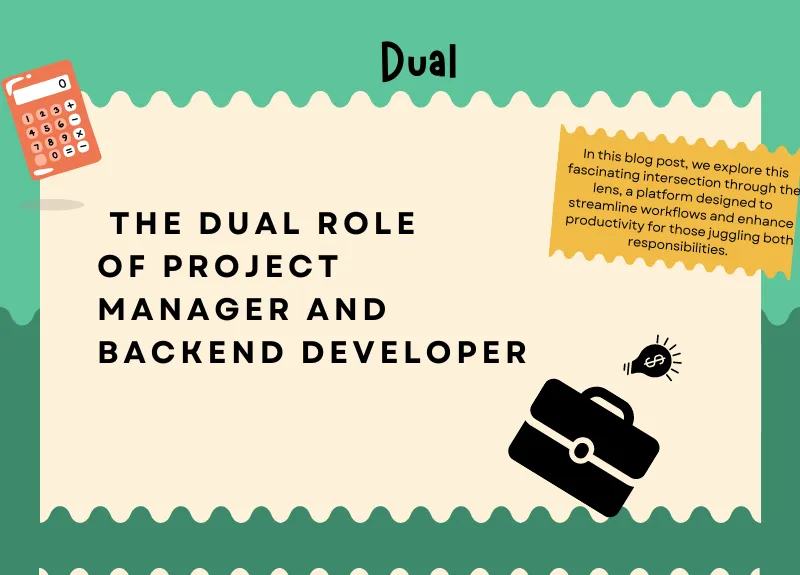In the dynamic world of software development, wearing multiple hats has become increasingly common. Among the various roles that can overlap, one intriguing combination is that of a project manager who also serves as a backend developer. This dual role demands a unique blend of skills—managing teams, coordinating projects, and diving deep into coding tasks. In this blog post, we explore this fascinating intersection through the lens, a platform designed to streamline workflows and enhance productivity for those juggling both responsibilities.
Understanding the Dual Role
At the heart of successful software development lies the seamless integration of management and technical expertise. The project manager tasked with backend development embodies this fusion, ensuring that strategic oversight and handson coding go hand in hand. This dual role is not without its challenges, requiring a delicate balance between overseeing project milestones and delving into the complexities of backend architecture.
The Importance of Backend Development
Backend development forms the backbone of any web application, handling everything from database interactions to server configuration. It’s the invisible engine that powers the userfacing frontend, ensuring data integrity, security, and performance. For a project manager stepping into this role, understanding the intricacies of backend development is crucial for guiding the project to success.
Empowering Dual Role Professionals
a platform designed with the dualrole professional in mind. offers a suite of tools aimed at simplifying both project management and backend development tasks. By integrating project tracking, team collaboration, and coding assistance features, enables project managers turned backend developers to efficiently manage projects while also contributing to the technical aspects of development.
Project Tracking and Collaboration
offers robust project tracking features that allow managers to oversee progress, deadlines, and resource allocation effortlessly. Its collaboration tools ensure that team members are aligned and can communicate effectively, regardless of their physical location. This is particularly beneficial for backend development tasks, which often require close coordination among team members.
Coding Assistance and Integration
For the backend development aspect, we integrate coding assistance tools that help streamline the development process. From autocompletion features that speed up coding to integrated testing environments that ensure code quality, supports backend developers in maintaining high standards of efficiency and accuracy.
Seamless Transition Between Roles
One of the challenges of wearing both hats is switching between managerial and developmental tasks. addresses this by providing a seamless transition experience. With all necessary tools and information accessible from a single platform, users can easily shift focus from project management duties to coding tasks and vice versa, maximizing productivity and minimizing contextswitching overhead.
Conclusion
The dual role of project manager and backend developer is a testament to the evolving nature of software development roles. Platforms play a crucial part in supporting professionals who embody this hybrid role, offering tools and features that cater to both aspects of their work. By leveraging , individuals can effectively manage projects while actively contributing to backend development, leading to more cohesive teams, streamlined workflows, and ultimately, successful project outcomes. As the software development landscape continues to evolve, solutions will undoubtedly play an increasingly important role in empowering professionals to excel in their multifaceted roles.
